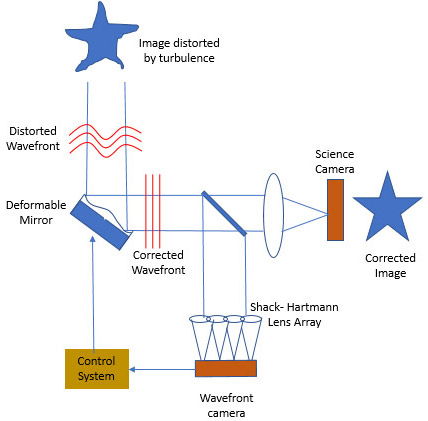Resources
 Part of the Oxford Instruments Group
Part of the Oxford Instruments Group
Expand
Collapse
 Part of the Oxford Instruments Group
Part of the Oxford Instruments Group

Turbulence and air-currents within the atmosphere greatly affect imaging as anyone who has used a ground-based telescope will be all too aware of. Adaptive optics (AO) provides a way to address this issue. By using a high speed wavefront Imaging Sensor coupled to a deformable mirror it is possible to actively correct the distorted wave front so that the resultant corrected image can be formed on another imaging camera.
Normally a high speed sCMOS camera is used as a wavefront camera alongside the deformable mirror and control PC. The secondary imaging camera can be either EMCCD or sCMOS. This approach allows for exceptionally well resolved images allowing much more accurate observations to be made with ground-based telescopes. Many variations of this method have been developed to provide better imaging performance as the distortion effects can be quite complex. AO systems are well established for military and astronomy applications, but this approach is also starting to make inroads into life science imaging applications. There are many sources of optical aberrations in microscopy such as, but not limited to, refraction in the sample and between interfaces and of course the optical elements of the microscope itself. While it is often possible to minimise these effects by good sample preparation and correctly configured microscope, using AO principles is promising for thicker samples.
Further Reading
References
Date: February 2020
Author: Dr Alan Mullan and Claudia Florindo
Category: Application Note
